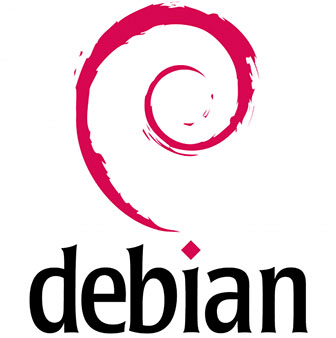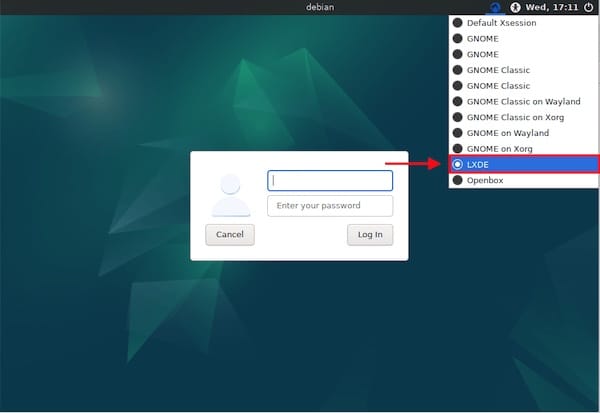How To Install LXDE Desktop on Debian 12

LXDE (Lightweight X11 Desktop Environment) offers a refreshing alternative to the resource-heavy GNOME desktop that comes standard with Debian 12. If you’re running hardware with limited specifications or simply prefer a more streamlined computing experience, LXDE provides an excellent balance of functionality and performance. This comprehensive guide walks you through multiple installation methods, configuration options, and troubleshooting steps to get LXDE running perfectly on your Debian 12 system.
Understanding LXDE Desktop Environment
LXDE stands as one of the most efficient desktop environments available for Linux systems today. Unlike heavy desktop environments that demand substantial system resources, LXDE is designed with modularity and energy efficiency at its core. This lightweight desktop environment requires minimal CPU and RAM resources while providing a complete and functional user interface.
Key Features of LXDE:
- Modular architecture that allows components to run independently
- Significantly lower memory footprint compared to GNOME or KDE
- Energy-efficient design perfect for older hardware and virtual machines
- Fast performance even on systems with limited resources
- Customizable interface with a familiar desktop paradigm
LXDE provides all essential desktop functionality without the bloat, making it ideal for breathing new life into aging hardware or maximizing performance on modern systems.
Prerequisites for Installing LXDE on Debian 12
Before beginning the installation process, ensure your system meets the necessary requirements and is properly prepared:
System Requirements:
- A system with Debian 12 “Bookworm” installed
- Root access or sudo privileges
- At least 256MB RAM (though 512MB or more is recommended for smooth operation)
- Internet connection to download packages
- At least 5GB free disk space
Preparation Steps:
- Update your system’s package repositories to ensure you get the latest versions:
sudo apt update && sudo apt upgrade -y - Back up any important data or configurations before proceeding with desktop environment changes
- Ensure you have sufficient permissions to install system packages
With these prerequisites in place, you’re ready to explore the various methods for installing LXDE on your Debian 12 system.
Method 1: Installing LXDE via APT Package Manager
The APT (Advanced Package Tool) package manager provides the most straightforward way to install LXDE on Debian 12. This method works directly from the command line and requires minimal user intervention.
Step 1: Update Your Repository
First, ensure your package lists are up-to-date:
sudo apt updateStep 2: Install LXDE
You have several options for the installation package:
For a complete LXDE environment with all components and applications:
sudo apt install lxde -yFor a minimal installation with just the core components:
sudo apt install lxde-core -yFor a comprehensive Debian LXDE desktop that includes additional Debian-specific configurations:
sudo apt install task-lxde-desktop -yStep 3: Select the Display Manager
During installation, you’ll be prompted to choose a display manager. The two main options are:
- LightDM: A lightweight display manager that’s recommended for LXDE
- GDM3: GNOME’s default display manager, which is more resource-intensive
For optimal performance with LXDE, select LightDM by highlighting it and pressing Enter.
Step 4: Restart Your System
After installation completes, reboot your system to apply the changes:
sudo rebootThis method provides a balance of simplicity and control, making it suitable for most users looking to install LXDE on Debian 12.
Method 2: Installing LXDE via Synaptic Package Manager
If you prefer graphical interfaces over command-line operations, the Synaptic Package Manager offers a user-friendly alternative for installing LXDE.
Step 1: Install Synaptic (if not already present)
sudo apt install synaptic -yStep 2: Launch Synaptic Package Manager
You can launch Synaptic either through the terminal:
sudo synapticOr by accessing it through your current desktop environment’s application menu.
Step 3: Search for LXDE Packages
- Click the “Search” button in the top-right corner
- Type “lxde” in the search bar
- Press the “Search” button
Step 4: Select and Mark for Installation
- Find the “lxde” package in the results
- Right-click on it and select “Mark for Installation”
- If dependency dialogues appear, click “Mark” to include required dependencies
Step 5: Apply Changes
- Click the “Apply” button in the toolbar
- Review the changes in the summary window
- Click “Apply” again to confirm and begin installation
- Select your preferred display manager when prompted
Step 6: Restart Your System
After installation completes, reboot to implement the changes:
sudo rebootThis graphical method is particularly helpful for those who are new to Linux or prefer visual interfaces for system management tasks.
Method 3: Installing LXDE via Tasksel
Tasksel provides a simplified way to install software collections or “tasks” on Debian systems. It’s particularly useful for installing desktop environments like LXDE with minimal user input.
Step 1: Install Tasksel (if not already present)
sudo apt install tasksel -yStep 2: Launch Tasksel
sudo taskselStep 3: Select LXDE Desktop Environment
- Navigate through the list using arrow keys
- Find “LXDE desktop environment”
- Press the spacebar to select it
- Press Tab to highlight “OK” and then Enter to continue
Step 4: Wait for Installation to Complete
Tasksel will download and install all necessary packages automatically. This may take some time depending on your internet connection speed.
Alternative Command-Line Approach:
If you prefer a direct command without the interactive interface:
sudo tasksel install lxde-desktopOr:
sudo apt install task-lxde-desktopStep 5: Restart Your System
After installation completes:
sudo rebootTasksel offers a middle ground between the simplicity of APT and the visual approach of Synaptic, making it ideal for users who want a straightforward installation with minimal commands.
Method 4: Installing LXDE During Debian 12 Installation
If you’re performing a fresh installation of Debian 12, you can select LXDE as your desktop environment during the installation process.
Step 1: Proceed with Debian 12 Installation
Boot from your Debian 12 installation media and proceed through the initial steps.
Step 2: Reach the “Software Selection” Step
Continue through the installation until you reach the “Software Selection” screen.
Step 3: Select LXDE Desktop Environment
- Navigate to the “LXDE” option
- Press the spacebar to select it
- Ensure “standard system utilities” is also selected
- Press Tab to highlight “Continue” and then Enter
Step 4: Select Display Manager
When prompted to choose a display manager:
- Select “lightdm” for optimal performance with LXDE
- Press Enter to continue
Step 5: Complete the Installation
Follow the remaining prompts to complete your Debian 12 installation with LXDE as the desktop environment.
This method provides the cleanest installation of LXDE on Debian 12, as it avoids potential conflicts with other desktop environments.
Method 5: Installing LXDE via Debian Source Repository
For users who prefer more control over their installation or need specific package configurations, installing directly from the Debian source repository is an option.
Step 1: Update Package Lists
sudo apt updateStep 2: Install LXDE from Repository
Choose one of the following commands based on your needs:
For a standard installation:
sudo apt install lxde -yFor a complete Debian LXDE desktop:
sudo apt install task-lxde-desktop -yFor the minimal core components only:
sudo apt install lxde-core -yStep 3: Select Display Manager
When prompted, select your preferred display manager (LightDM recommended for LXDE).
Step 4: Restart Your System
sudo rebootThis method is similar to Method 1 but emphasizes the different package options available from the Debian repositories for tailoring your LXDE installation.
Launching and Configuring LXDE on Debian 12
After installing LXDE, you’ll need to know how to log in to your new desktop environment and perform initial configurations.
Logging into LXDE:
- At the login screen, click on the session icon (usually a gear or desktop icon)
- Select “LXDE” from the available desktop environments
- Enter your username and password
- Click “Log in” or press Enter

LXDE First-Run Experience:
When you first log in to LXDE, you’ll see a clean, lightweight desktop with:
- A panel at the bottom (similar to a taskbar)
- A start menu in the bottom-left corner
- A clean desktop background
- Minimal pre-installed applications
Basic LXDE Configuration:
LXDE’s appearance can be customized through the “Customize Look and Feel” tool:
- Click the start button (bottom-left corner)
- Navigate to “Preferences”
- Select “Customize Look and Feel”
From here, you can modify various aspects of the LXDE desktop:
- Widget Tab: Change the overall style of windows and controls
- Icon Theme: Modify how application and system icons appear
- Color Tab: Adjust custom colors for your selected theme
- Font Settings: Change the size and type of system fonts
- Other Tab: Configure toolbar and button settings
For advanced customization, you can also right-click on the panel to access panel preferences, allowing you to:
- Add or remove panel items
- Change panel size and position
- Add new panels or remove existing ones
- Configure the application menu
Making LXDE the Default Session Manager
If you’ve installed multiple desktop environments on your Debian 12 system, you may want to set LXDE as the default for all future logins.
Method 1: Using update-alternatives:
- Open a terminal and run:
sudo update-alternatives --config x-session-manager - A list of available session managers will be displayed
- Enter the number corresponding to LXDE/startlxde
- Press Enter to confirm your selection
Method 2: Creating .xsession File:
- Create or edit the .xsession file in your home directory:
echo "startlxde" > ~/.xsession - Make the file executable:
chmod +x ~/.xsession
This file will be read when you log in, launching LXDE regardless of your display manager’s default setting.
Method 3: Configuring Display Manager Default:
For LightDM:
- Edit the LightDM configuration file:
sudo nano /etc/lightdm/lightdm.conf - In the [Seat:*] section, add or modify:
user-session=LXDE - Save and exit the editor
These methods ensure that LXDE starts automatically when you log in, without having to select it each time from the session menu.
Running LXDE with Different Display Managers
LXDE works with various display managers, though some configuration may be required for optimal performance.
LightDM (Recommended):
LightDM is the most compatible and lightweight option for LXDE. It should work without additional configuration after selecting it during installation.
GDM3 (GNOME Display Manager):
If using GDM3 with LXDE:
- Create a .desktop file for LXDE:
sudo nano /usr/share/xsessions/lxde.desktop - Add the following contents:
[Desktop Entry] Name=LXDE Comment=LXDE - Lightweight X11 Desktop Environment Exec=startlxde Type=Application - Save and exit the editor
Using Startx:
For systems without a display manager:
- Create or edit your .xinitrc file:
echo "exec startlxde" > ~/.xinitrc - Start LXDE from the command line:
startx
Each display manager offers different features and resource requirements, so choose the one that best fits your system’s capabilities and your personal preferences.
Troubleshooting Common Installation Issues
Even with careful installation, you may encounter issues when setting up LXDE on Debian 12. Here are solutions to common problems:
Black Screen After Login:
If you see a black screen after selecting LXDE:
- Press Ctrl+Alt+F1 to switch to a terminal
- Log in with your username and password
- Reinstall LXDE components:
sudo apt install --reinstall lxsession - Reboot your system:
sudo reboot
Authentication Issues with Polkit:
If you encounter permission errors for various operations:
- Create a Polkit rules file:
sudo nano /etc/polkit-1/localauthority.conf.d/02-allow-colord.conf - Add the following content:
polkit.addRule(function(action, subject) { if (action.id == "org.freedesktop.color-manager.create-device" || action.id == "org.freedesktop.color-manager.create-profile" || action.id == "org.freedesktop.color-manager.delete-device" || action.id == "org.freedesktop.color-manager.delete-profile" || action.id == "org.freedesktop.color-manager.modify-device" || action.id == "org.freedesktop.color-manager.modify-profile") { return polkit.Result.YES; } }); - Save and reboot your system
Missing Applications or Desktop Elements:
If some applications or desktop elements are missing:
sudo apt install lxde-common lxpanel lxsession pcmanfmDisplay Manager Not Starting:
If your display manager fails to start:
- Check its status:
sudo systemctl status lightdm - If it’s failing, reconfigure it:
sudo dpkg-reconfigure lightdm - Ensure it’s enabled:
sudo systemctl enable lightdm
These troubleshooting steps address the most common issues users face when installing LXDE on Debian 12.
Congratulations! You have successfully installed LXDE. Thanks for using this tutorial for installing the LXDE desktop environment on Debian 12 “Bookworm” system. For additional help or useful information, we recommend you check the official LXDE website.